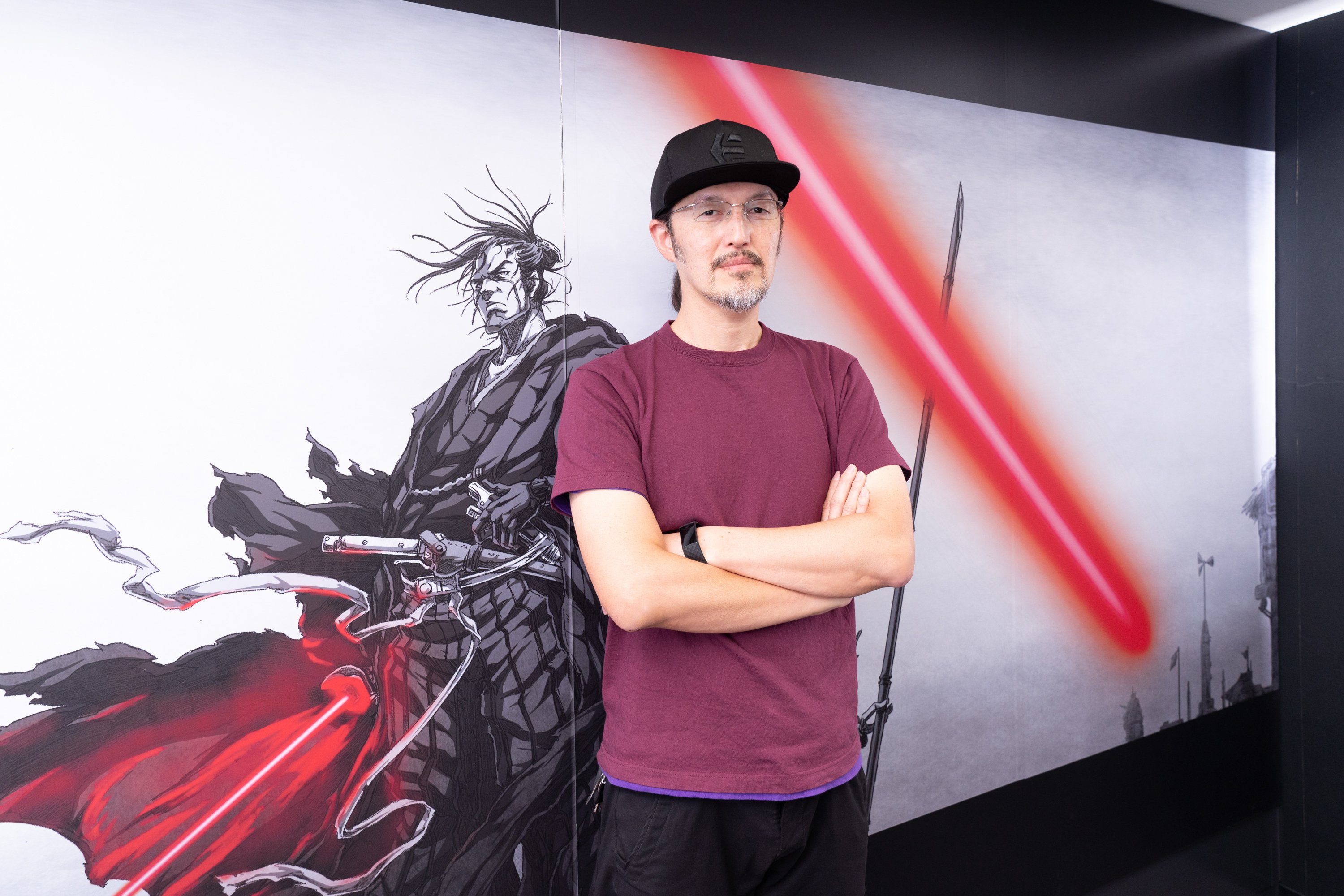
Anime Day Artist Focus
Blades & Brushstrokes: The Visions of Kamikaze Douga Directors.
In celebration of Anime Day, LightWave interviewed Takanobu Mizuno, from the acclaimed Animation Studio, Kamikaze Douga; a collective of innovative Creative Directors, known for their unique blending of traditional Japanese aesthetic with bold, gripping animation. Ranging in visual style and mediums, from films to stage visuals, and combined live-action, animation pieces. Takanobu Mizuno gives insight into his own journey becoming a Creative Director for Kamikaze Douga through LightWave3D, and the creative projects he's worked on throughout his career.
LW: Can you tell us about how you started out in this career and your current role?
TM: More than a quarter of a century ago, when I was working as a graphic designer at a printing company after graduating from a university with a degree in industrial design, it had just become possible for individuals to create animations with a single computer. And then I started playing with 2D animation using the old Macromedia FLASH.
Eventually, I became interested in 3DCG, so I tried various software available on Mac, such as STRATA, Shade 3D, Animation: Master, and Poser, all of which were within the range of what individuals could afford. However, I wanted to do more rudimentary modeling, and I began to wonder if 3DCG was not for me. Then I learned about Rokkaku Daioh, which had a function that allowed me to model as if I were drawing a picture, and when I tried it, I found that it suited me well and I could model as I wanted. Since it had a LightWave output function, I wanted to run the models I created and then I purchased LightWave3D.
After that, I was making prototypes of realistic 3D and live-action composites. I had already quit my job at that time and was thinking about changing careers in the 3DCG industry while teaching myself LightWave3D, so I applied for the position of LightWave3D animator at Kamikaze Douga when it was open.
LW: What inspired you to pursue this career?
TM: I was influenced by the artworks of animators Yoshinori Kanada and Ichiro Itano that I saw when I was in elementary school. But I think I was greatly influenced by my older brother (Kenichiro Mizuno), who taught me many things about the appeal of such artworks. Even though my brother became an artist, and I became a graphic designer, once we were able to create animations individually, we would show each other the animations we had created.
The trailer “No More Heroes 3 - The Return” (2021) for Nintendo Switch, which I directed, was a great inspiration for me to work with my brother's character design and animation, Masanori Ushiki, AC-bu, and other artists I like.
LW: What Projects do you use LightWave on?
TM: In my 20 years at Kamikaze Douga, I have used LightWave3D in some form or another in almost every project I have been involved in, and even in projects at other companies where other 3D software is the main tool, I use LightWave3D as a direction tool for storyboard and previsualization, etc.
LightWave3D was used as the main 3D tool in the following works.
‘Wamono’,(MV)/ Hifana (2005), ‘Batman Ninja’, Animated Movie (2018), ‘Sound & Fury’, Feature MV/Sturgill Simpson (2019), ‘No More Heros’, Game Trailer (2021), and ‘The Duel’ from ‘Star War: Visions’, Short Animated Movie (2021).
LW: What are some of the milestones or key achievements in your career so far?
TM: Since I joined Kamikaze Douga, I have been researching various texture expressions.
Meanwhile, there was a call for new projects within the company, so I developed a method that aimed for the softness of hand-drawn animation in 3DCG and produced a music video work called “The Last Piece - Chapter of Kyosuke Kijima” (2009). Even though the entire process of storyboarding, design, modeling, animation, and editing was done by one person in just one month, it was selected as a recommended work for the Japan Media Arts Festival, and I began to receive many requests for music-related projects.
Since then, I have been working on new projects with my staff based on this technique, which has been used mainly for smaller projects due to its unique characteristics and complexity, but “The Duel” from “Star Wars: Visions” (2021) represented the culmination of our work. “The Duel” was nominated for the 49th Annie Award for Best General Audience Animated Television Broadcast Production and the 74th Emmy Award for Outstanding Short Form Animated Program and won the Grand Prize in the Short Film category at the VFX-JAPAN Awards 2022.
LW: What are your favourite features of LightWave 3D, and how do they enhance your work?
TM: I don't usually use advanced functions, so this is just the basics, but what I like most is the ability to easily add bones to a character model and make it move. For simple designs such as “The Last Piece” series, you can streamline setup by adding simple bones and sharing weights with multiple bones or sharing the same weights on both sides or easily splitting bones and bending them smoothly with the push of a button during animation work. Animators can freely adjust the shape of the character by adding bones in areas where the character is forced into an unnatural pose and is likely to break down, thereby expanding the range of expression.
Another point is that the modeler (modeling software) and layout (animation rendering software) are separated, and since the default is to load models by references, it is easy to update models. At Kamikaze Douga, we develop textures that suit each project, so there is a lot of trial and error with no predetermined process or specifications, and it is very easy to go back to the previous process. I have used LightWave3D for many years and I hope to keep using it for the rest of my life!











